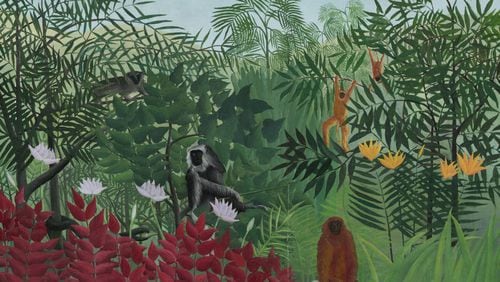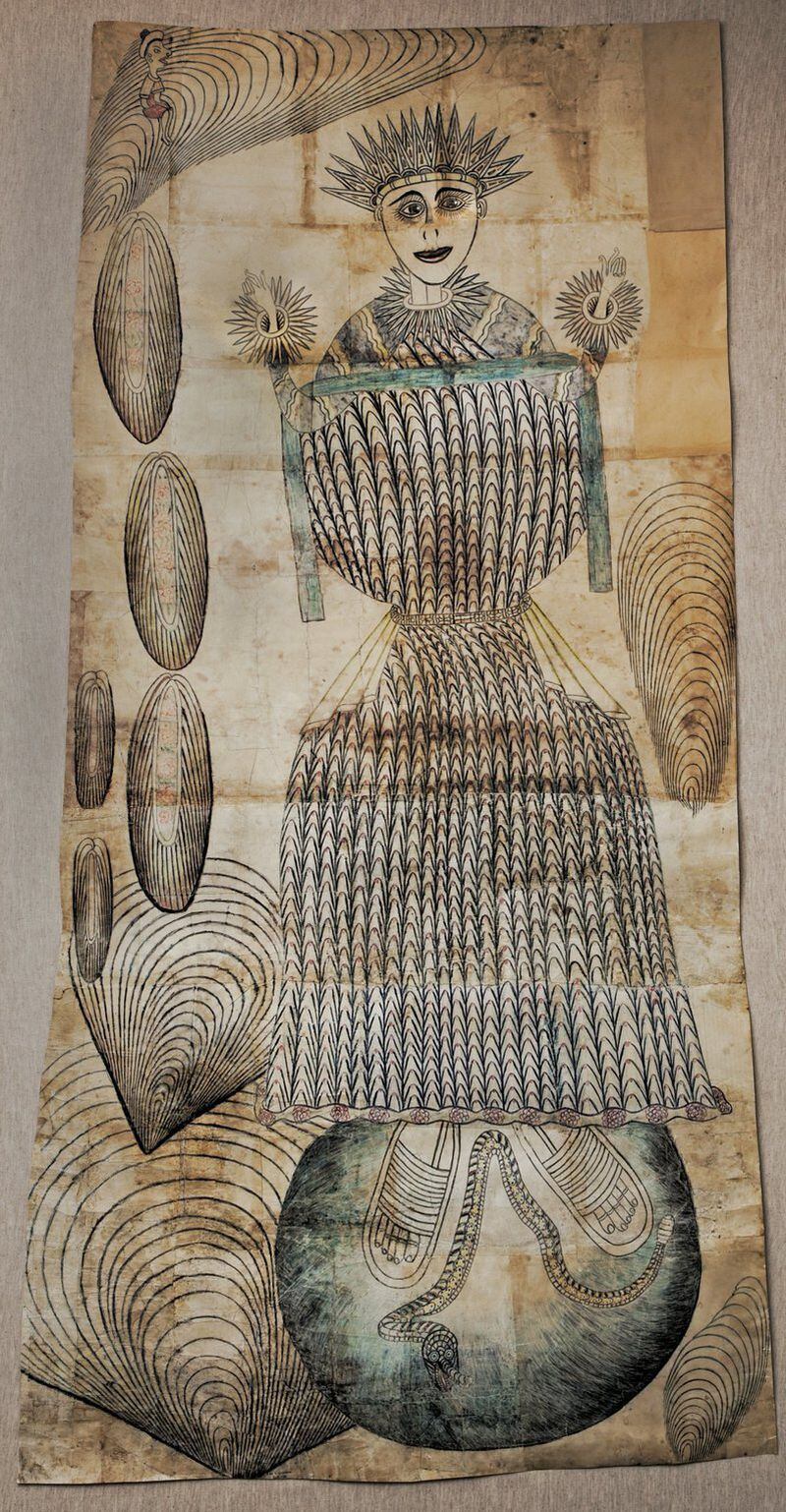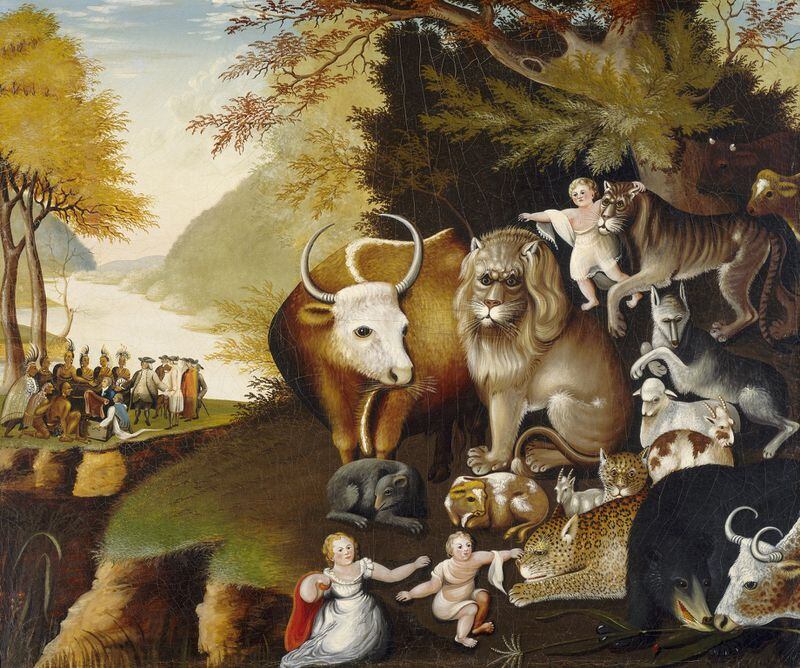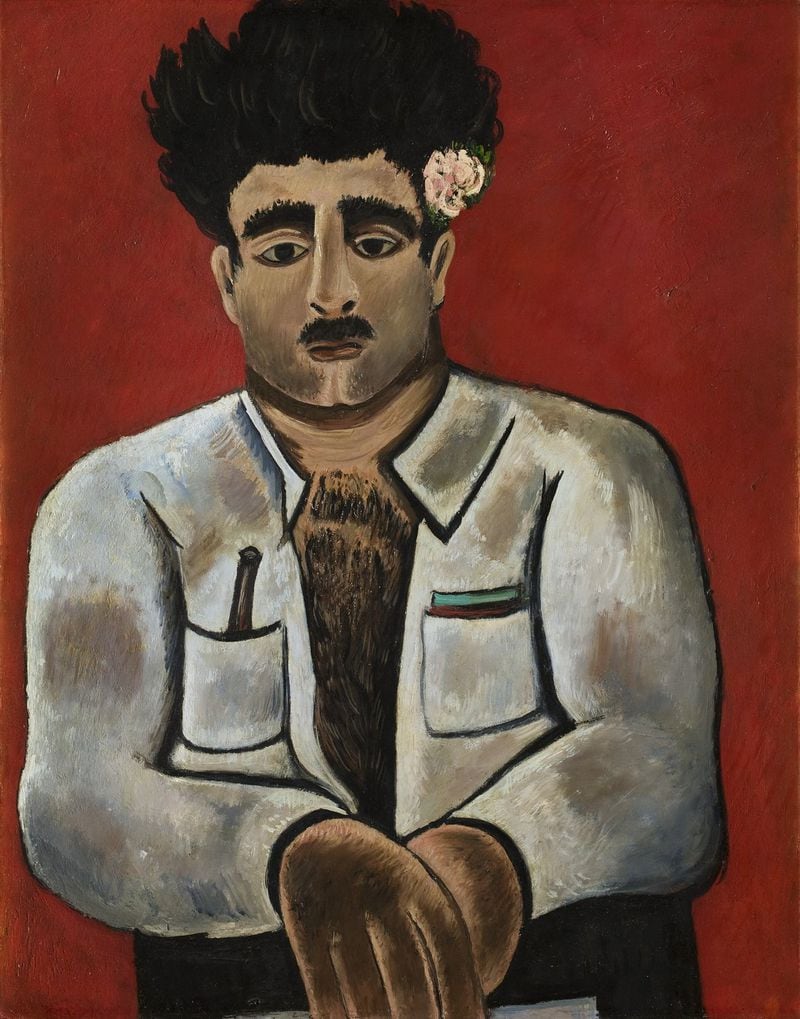If Americans remained unaware of outside art and folk artists during most of the last century, trained artists, from Pablo Picasso to Kara Walker, have been paying close attention.
The exuberance of the folk artist, the dedication to a singular vision and the willingness to pursue that vision in the absence of any acclaim often inspired the trained artist to pursue their own muses with vigor.
“When you see someone like (Martin) Ramirez … or (Joseph) Yoakum striding out on their own, it makes you feel more comfortable with doing that yourself,” said Chicago surrealist Jim Nutt.
Ramirez, institutionalized for most of his adult life in California mental hospitals, was about as outside as you can get.
Limited, in his confinement, to the most meager of materials, he collected scraps of paper from brown paper bags and pages from books, then glued those together to make larger sheets, using a glue made of oatmeal and his own saliva.
On these makeshift canvases, he created stylized drawings of iconographic images — Madonnas, men on horseback, boats, trains, cities — with remarkable, vibrating concentric lines.
His work is included in a capacious new show, “Outliers and American Vanguard Art,” opening at the High Museum of Art on Sunday.
The intent of the show, said curator of folk and self-taught art Katie Jentleson, is to demonstrate that, just as Ramirez inspired Nutt, “outside and self-taught artists have fundamentally changed the course of modern and contemporary art.”
Consisting of 250 works of art, the exhibit was organized by the National Gallery of Art in Washington, D.C., under the direction of senior curator Lynne Cooke. It showed at the National Gallery from January through May of this year. It will remain in Atlanta until September, and then move to the Los Angeles County Museum of Art.
Cooke and Jentleson have been friends and colleagues since Jentleson pursued a dissertation on the rise of folk art during the period between World Wars I and II.
This show starts in that same period and traces the impact of the untutored artist during two additional time periods, in the 1960s-1970s and during the present era.
It occupies 15,000 square feet in the Wieland Pavilion and includes the work of 80 artists, about evenly divided between the untrained and the academic.
“The range is remarkable, not just in terms of the objects you see,” said Jentleson, who offered a brief tour of the show as it was being assembled last week. An exquisite and hilarious Jackie O doll (from Greer Lankton) stood in a vitrine, while a canvas from Henri Rousseau leaned against a wall, awaiting hanging.
“You will see traditional easel paintings, outlandish assemblages, fiber art, photography, video work, every medium of art is represented in this show,” she said. “There’s also a wonderful representation of artists of color, women artists and artists with disabilities. … They significantly diversified our canon, not just because they themselves were often people who had a marginal social position because of race, class or region. But because their acceptance broadened the scope of who we accept as an artist.”
>> RELATED: Preview of "Winnie-the-Pooh: Exploring a Classic
The High has a deep investment in Southern folk art, making the museum an appropriate locale for the “Outliers” show.
About a half-dozen pieces from the High’s collection are part of the show. At the end of the exhibit is a selection of quilts from the isolated Alabama village of Gee’s Bend. The point is made that New York abstract artists took fresh inspiration from these assembled blocks of color.
“What the show demonstrates is that the boundaries of the art world are extremely porous,” said Jentleson.
EXHIBIT PREVIEW
“Outliers and American Vanguard Art”
June 24-Sept. 30. $14.50, ages 6 and older; free for children 5 and younger and members. High Museum of Art, 1280 Peachtree St., Atlanta. 404-733-4400, high.org.
About the Author










